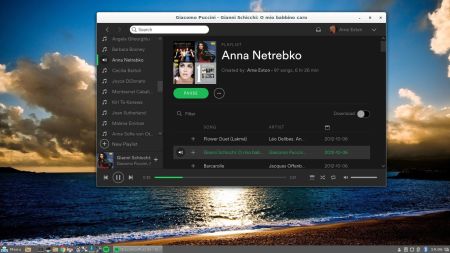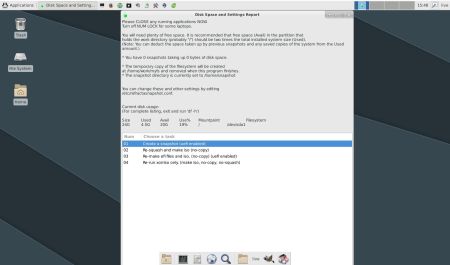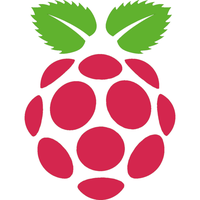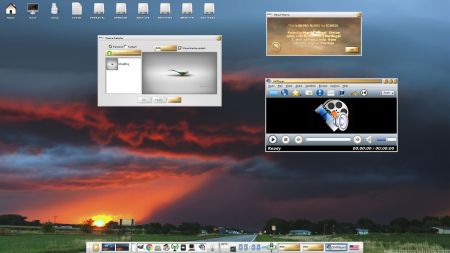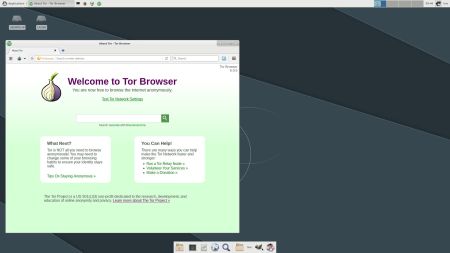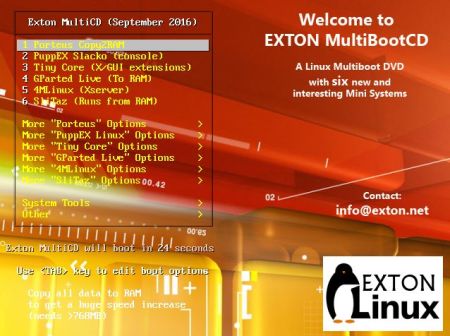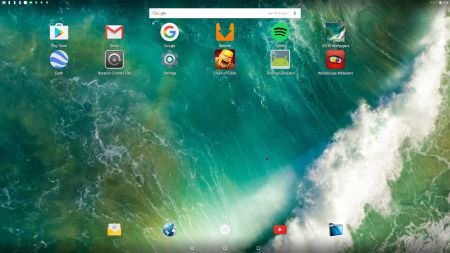 NEWS 161107: AndEX – Nougat 7.0 with kernel 4.4.27-exton-android-x86_64 and GAPPS
NEWS 161107: AndEX – Nougat 7.0 with kernel 4.4.27-exton-android-x86_64 and GAPPS
My new build of Android-x86_64 Nougat 7.0 has GAPPS pre-installed. I.e. Google Play Services, Google Play Store 7.1.16.1-all, Gmail and YouTube. Also many other apps. For example: Spotify 6.30.882, Clash of Clans 8.551.24, File Manager 1.01, Google Earth 8.0.4.2346, Google Now Launcher 1.4 and Aptoide App Manager. The ISO is called android_x86_64-nougat-7.0-gapps-exton-build-870mb-161107.iso.
ABOUT Andex Nougat
My compiled Android-x86_64 system (Nougat 7.0) can run live (from CD) on certain computers. It is best installed to a USB stick or to hard drive and running from there. The system can, however, be installed on almost all newer laptops (and some Desktop computers). For example Acer (Aspire), HP, Samsung, Dell, Toshiba, Lenovo, Thinkpad, Fujitsu, Panasonic and Asus laptops. I can also mention that I could run this Nougat version without problems on a HP Pavilion 500-317no Desktop Computer. I could also run it very well live on the HP Desktop computer. The Android system is distributed in the form of an ISO file as the rest of my Linux distributions. I.e. you must (as usual) burn the ISO file to a CD (DVD) before you can install AndEX Nougat to hard drive. Read about how to burn ISO files. Or skip that. Just use ImgBurn. Nothing can go wrong. You can also download my Android Nougat system in the form of a zip-file (android_x86_64-nougat-7.0-gapps-exton-build-1110mb-161107.zip) and do a manual installation to hard drive. That can even be done to a drive where you already have another Linux system (for example Ubuntu 16.10) installed. That’s sort of a Frugal Installation (normally used by Puppy Linux). Read more about different installations of AndEX Nougat at the INFO site.
Android Nougat 7.0 was released 160822.
What’s the point?
Well, if you like your Android phone and all the apps you have installed on it I’m sure you will also like to run apps from your laptop. Bigger screen and better sound etc. Also: In AndEX Nougat Build 161107 almost all apps and games can be installed via Google Play Store. You can even install very big games (of 1GB or so), but unfortunately almost all such games need a touchscreen. Still not convinced? Then read my article about “How useful an Androx-x86 system can be for the average computer user“.
Screenshots
Screenshot 1 – AndEX Nougat Desktop
Screenshot 2 – AndEX Nougat – The Desktop at first boot
Screenshot 3 – AndEX Nougat – The beginning of your configuration – Give Google Play Services all permissions and you won’t see any error messages
Screenshot 4 – AndEX Nougat – Google Play Store running
Screenshot 5 – AndEX Nougat – Adding a Gmail account – must be done for Google Play Store to work
Screenshot 6 – AndEX Nougat – Aptoide App Manager running
Screenshot 7 – AndEX Nougat running in VMware
Screenshot 8 – AndEX Nougat running in VirtualBox
